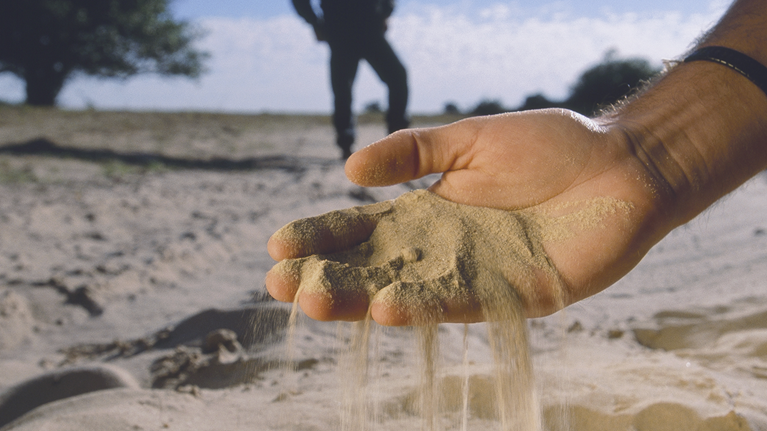Climate change is expected to make agricultural development in Africa more challenging. Weather patterns are becoming less favorable in many instances, increasing the volatility of crop and livestock yields. The frequency and/or severity of extreme events is increasing as temperatures are projected to continue rising, and rainfall patterns are expected to shift more than they have already (Exhibit 1).

Overall, Africa is vulnerable because for many of its crops, it is at the edge of physical thresholds beyond which yields decline. Moreover, a substantial portion of some countries’ economies (for example, one third of GDP for Ethiopia and one fifth of sub-Sahara Africa’s economic output) depends on agriculture. Finally, some aspects of adaptation may be challenging; for example, African farmers are generally more vulnerable to higher temperatures, fluctuations in rainfall, and variable yields than farmers in developed countries, who can usually more easily secure crop insurance, adjust what they plant, irrigate their fields, or apply crop protection chemicals and fertilizers.
In this case study, we focus on major crops in Ethiopia and Mozambique (See sidebar, “An overview of the case study analysis”). Using crop yield models, we assess the expected impact of climate change in 2030 on wheat and coffee in Ethiopia and on corn (maize) and cotton in Mozambique. It is important to note that Africa is a climatologically diverse continent and that the results presented here are not representative of the challenges or changes faced by other African nations. Climate change will affect some regions of Africa more or less than it affects Ethiopia and Mozambique.
By 2030, Ethiopia may face significant volatility in coffee yields while Mozambique may face greater volatility in corn production
While volatility is often symmetric, meaning positive and negative shocks are roughly equally likely, we find that the overall effect of increasing volatility is negative. Farmers and other players in the value chain usually do not fully capture the benefits from good years due to a limited ability to sell bumper harvest into shallow local markets, absence of storage infrastructure to smooth supply over many years, and poor transportation infrastructure that makes sale into other markets difficult. At the same time, a bad year can have longer-lasting effects for farmers. For subsistence farmers, they may for example have to go into debt or not be able to service existing debts.
We find that by 2030, Ethiopia’s wheat farmers are projected to face an 11 percent greater likelihood than today of a 10 percent or greater drop in annual yield. For coffee farmers in Ethiopia, the chance of experiencing a 25 percent or greater drop in annual yield could climb from 3.2 percent to 4.2 percent in 2030, which is a 31 percent increase, and a 28 percent cumulative likelihood over the next decade. Should yield shocks of this magnitude take place for both crops in the same year, we estimate that Ethiopia’s GDP growth rate would be cut by approximately three percentage points (Exhibit 2).

In Mozambique, we find a large seasonal loss (more than 30 percent) of the corn crop is expected to go from a highly improbable event to a 100-year event. We estimate that a 25 percent or greater drop in corn yields would reduce Mozambique’s GDP by 2.5 percent. Conversely, we find that cotton yields would become more stable; however, given the small size of cotton farming, this does not provide a strong counterbalance to the negative impacts on corn.
What can African farmers do to mitigate the impact of climate change?
Higher volatility in the yields of major African food crops is likely to result in higher price volatility for both farmers and consumers. African countries are already working to counteract growing volatility, but better and more localized planning and financial mobilization will be key.
Modernizing Africa’s agriculture in the face of a changing climate will require significant investment. Investments in irrigation can increase the likelihood that farmers maintain yields even when the weather is unfavorable. Better roads can help connect markets, which would help farmers sell their crops at fair prices. Improvements in the functioning of seed production systems would provide farmers with new varieties of seed that are suited to new conditions. Upgraded crop-storage facilities would prevent spoilage and food waste.
Climate change’s varying effects on regions and crops underscore the importance of targeted planning on the part of governments, investors, and international donors. Today’s planning models have difficulty accounting for these effects. First, published projections of climate change’s impacts typically focus on 2050 or 2100—too far out to aid nearer-term decisions. Second, climate and economic models that focus on local contexts are less common than broader models. We believe that governments, companies, development banks, donors, and other organizations stand to benefit from bringing highly localized, commodity-specific forecasts into agricultural planning in Africa.
Wider access to agricultural financial instruments, such as crop insurance, would enable individual farmers and households to better manage climate-related risks. However, expanding crop insurances may require support, because most farmers are not able to pay the full premium.
Overall, successful adaptation may depend primarily on changes in farmers’ behavior (for example, use of improved inputs such as fertilizer and better seeds), institutional improvements (for example, localized, commodity-specific forecasts), as well as the collaboration of affected stakeholders on certain adaptation measures (for example, to solve storage issues).
For additional details, download the case study, How will African farmers adjust to changing patterns of precipitation? (PDF–2MB).
About this case study:
In January 2020, the McKinsey Global Institute published Climate risk and response: Physical hazards and socioeconomic impacts. In that report, we measured the impact of climate change by the extent to which it could affect human beings, human-made physical assets, and the natural world over the next three decades. In order to link physical climate risk to socioeconomic impact, we investigated nine specific cases that illustrated exposure to climate change extremes and proximity to physical thresholds.


